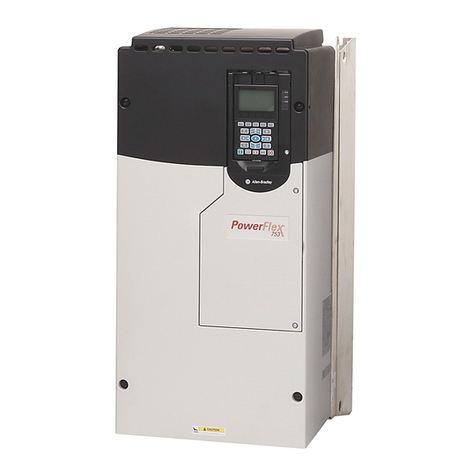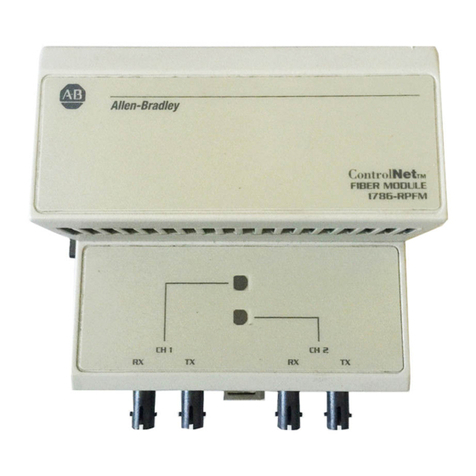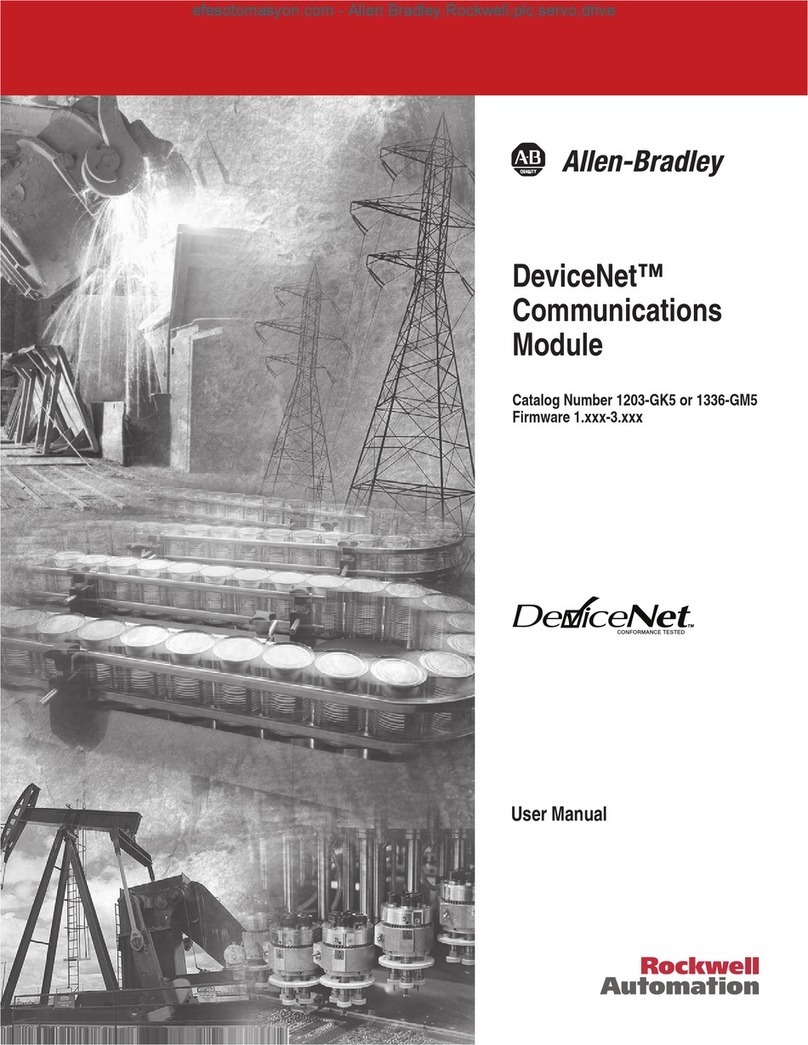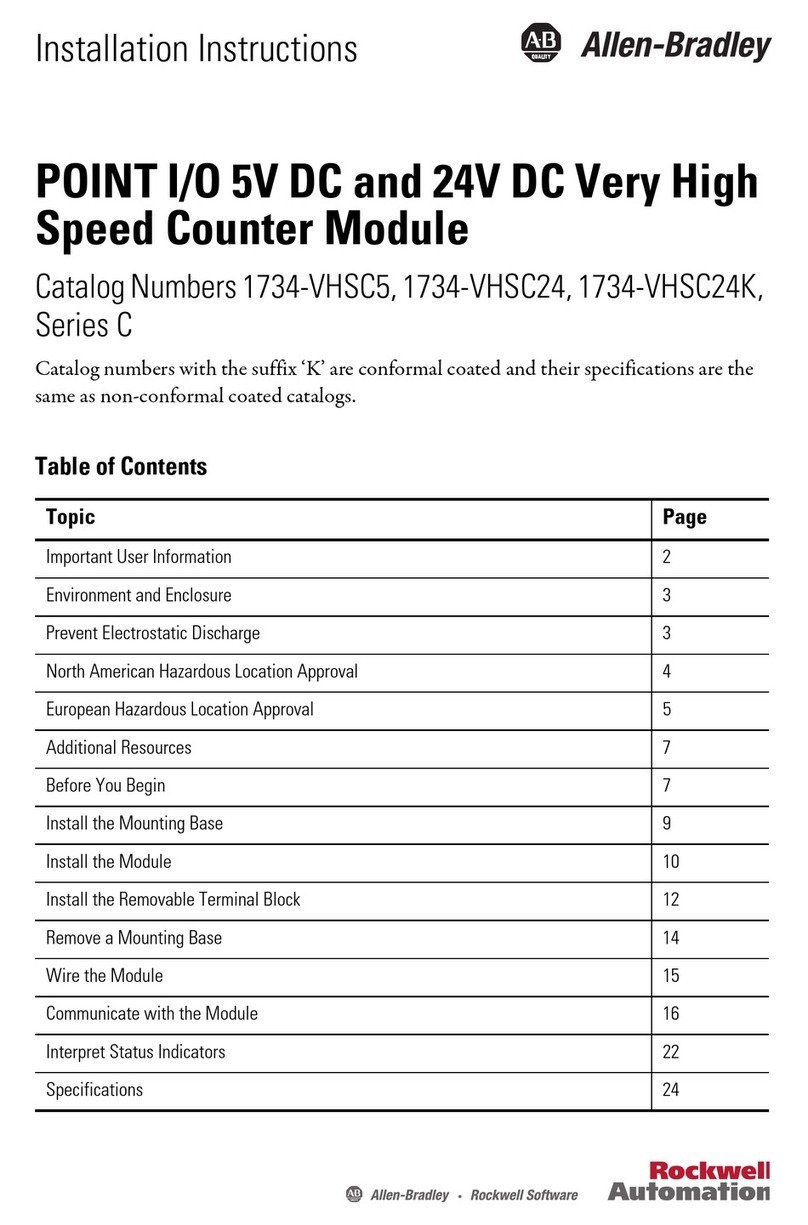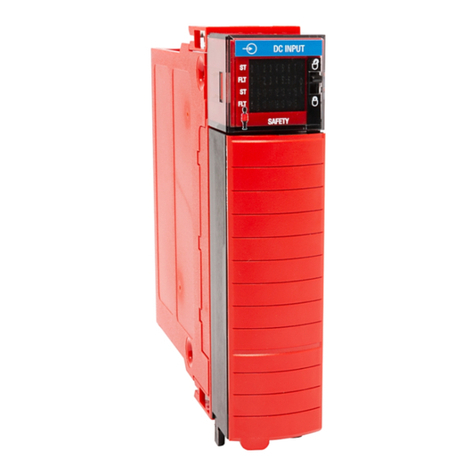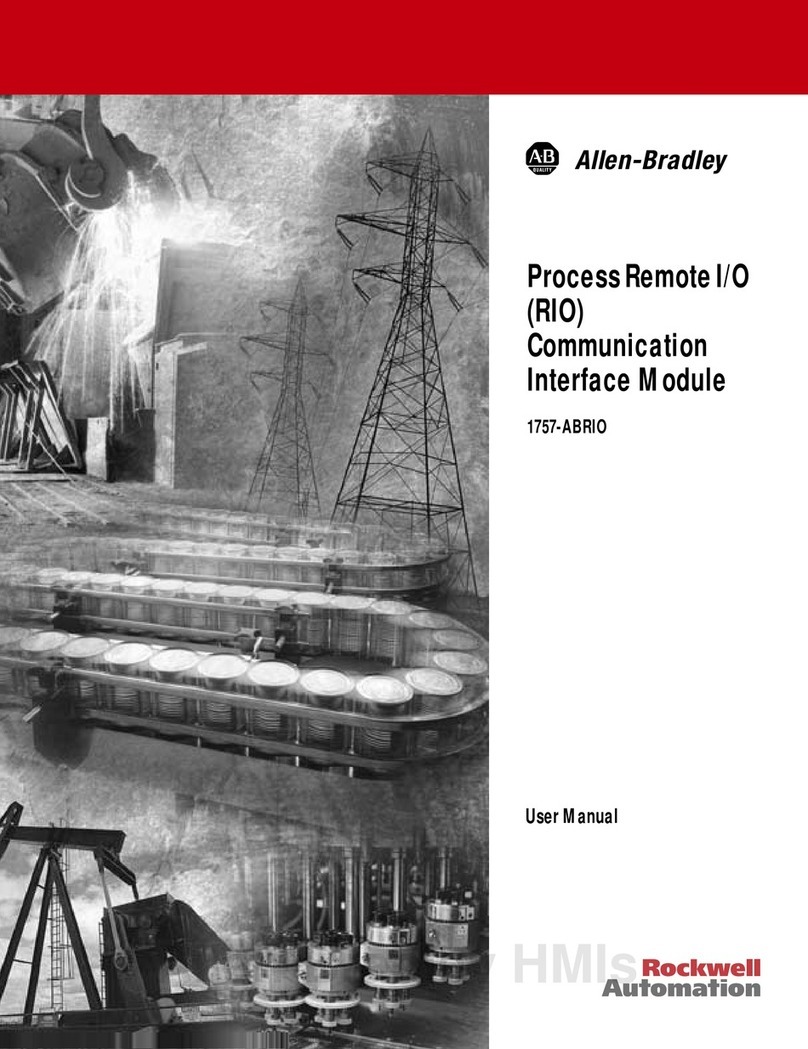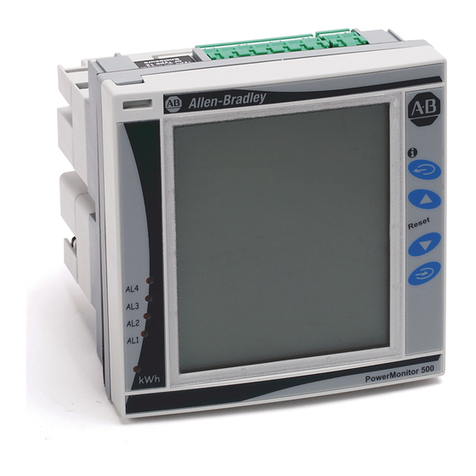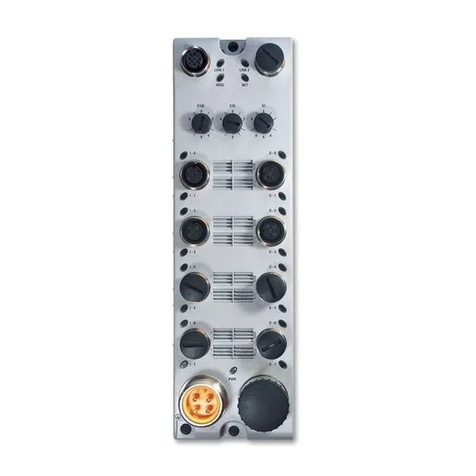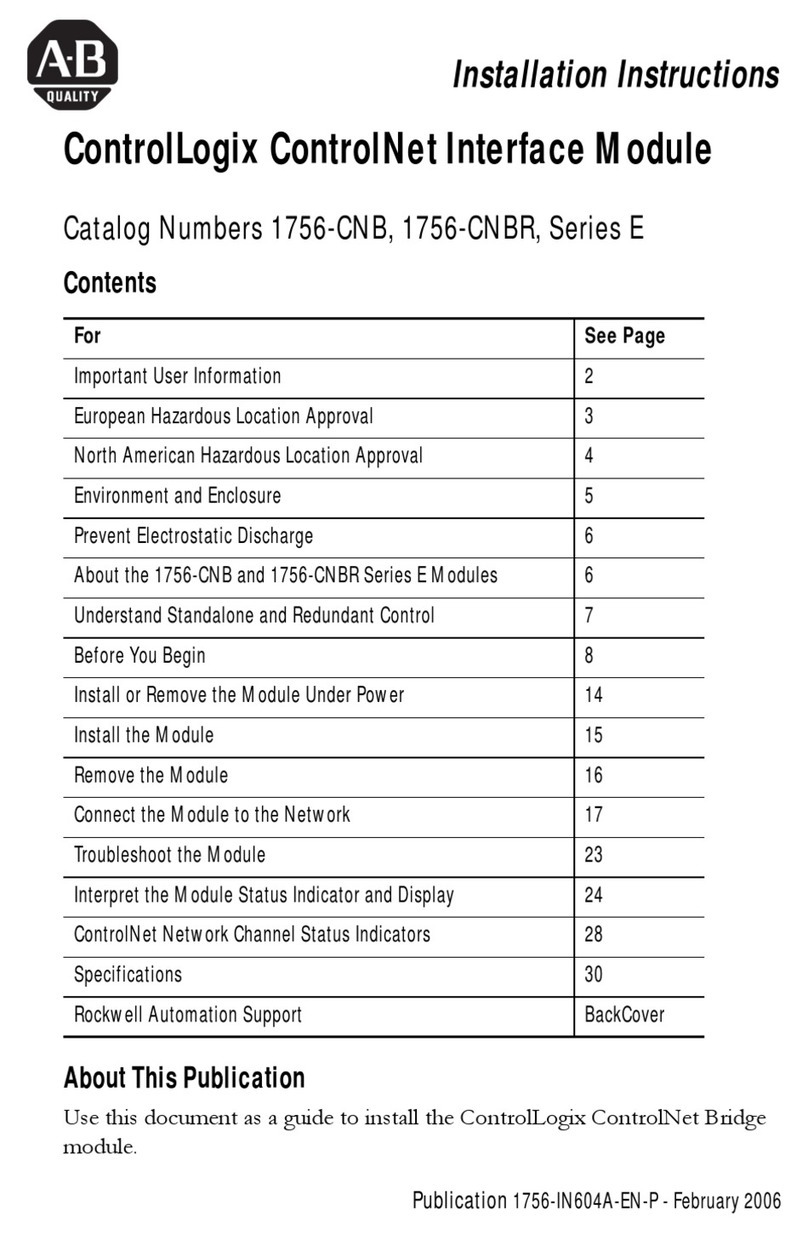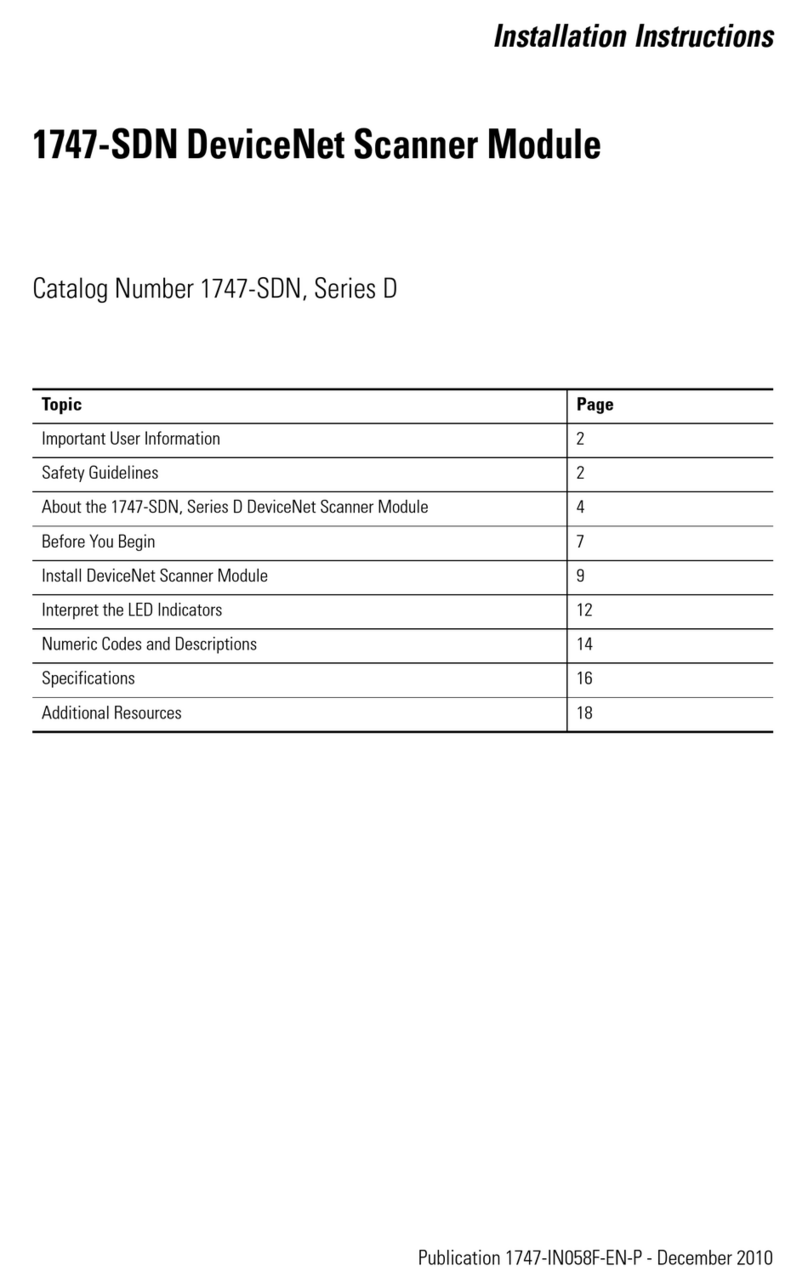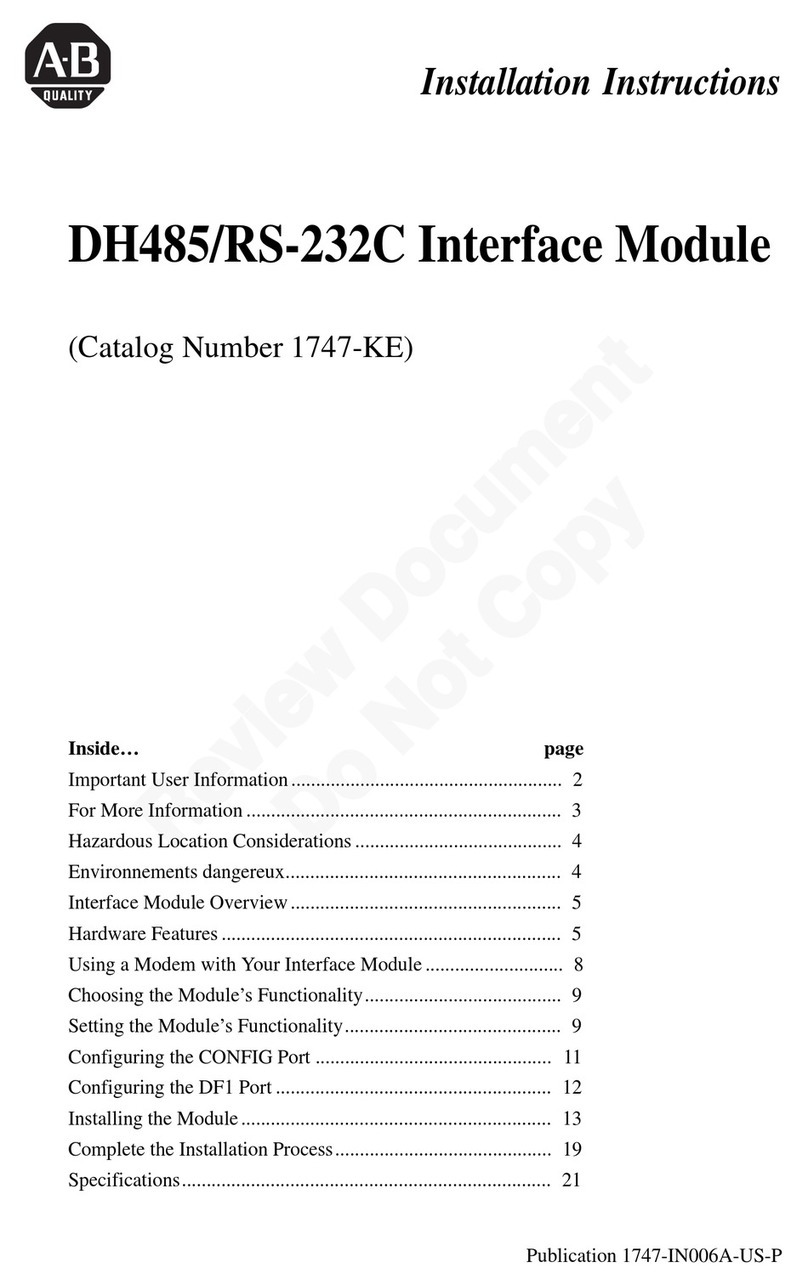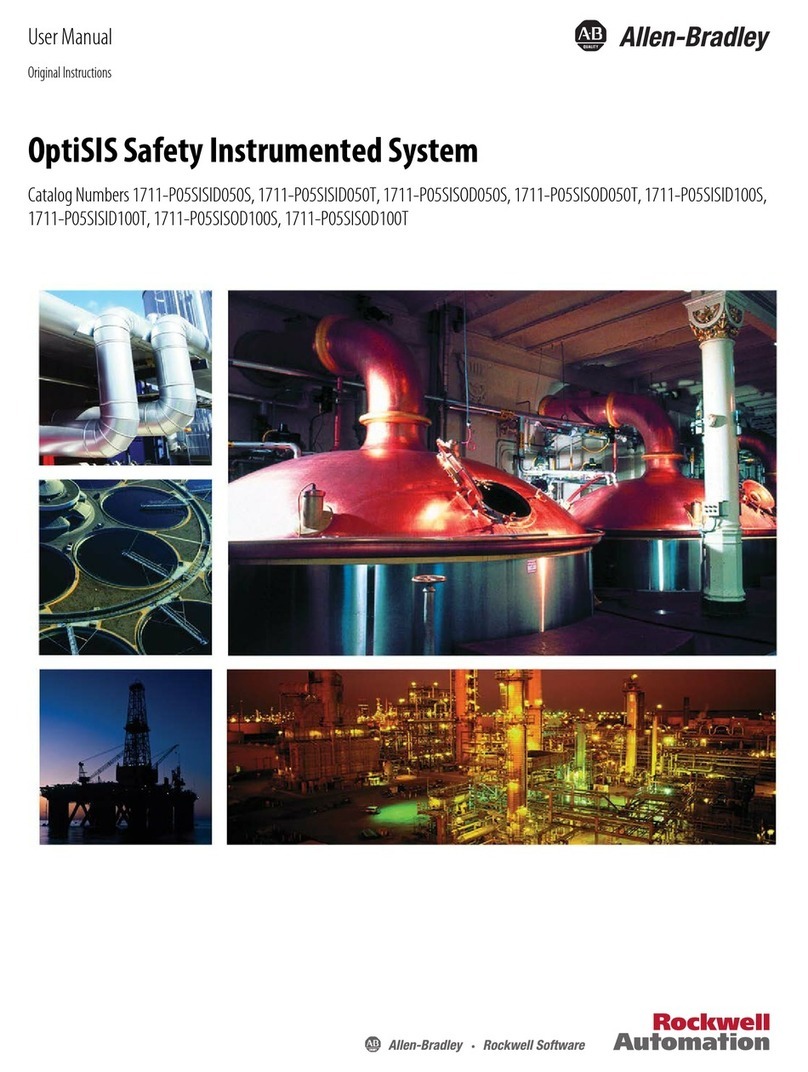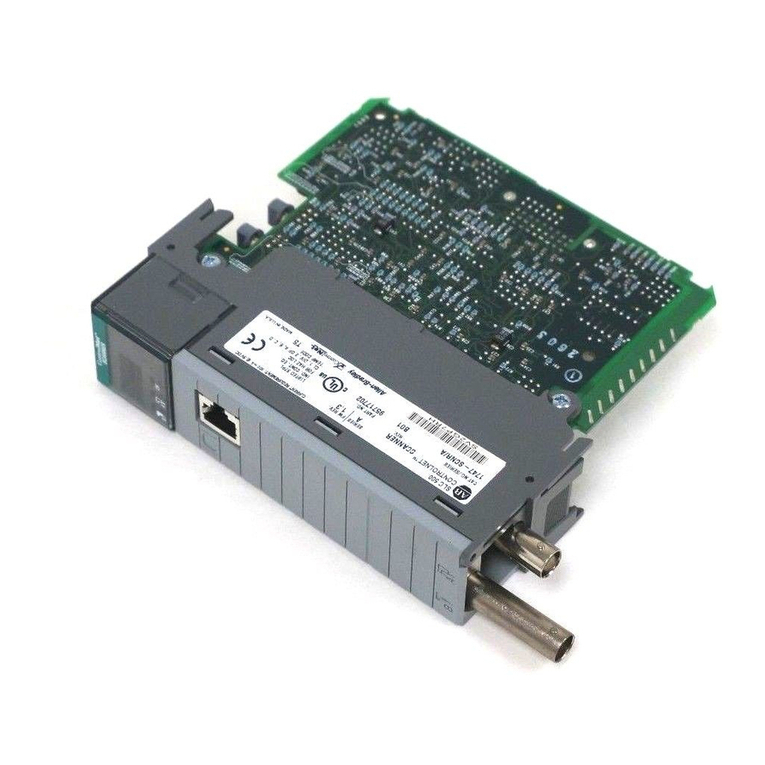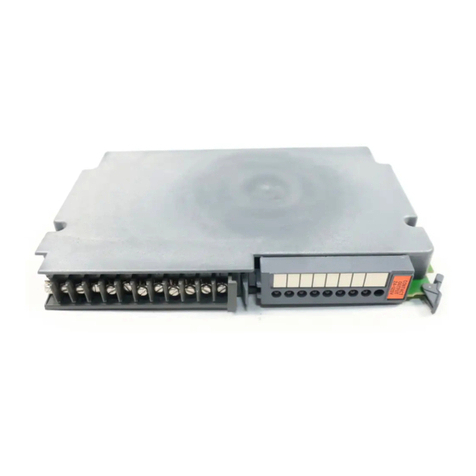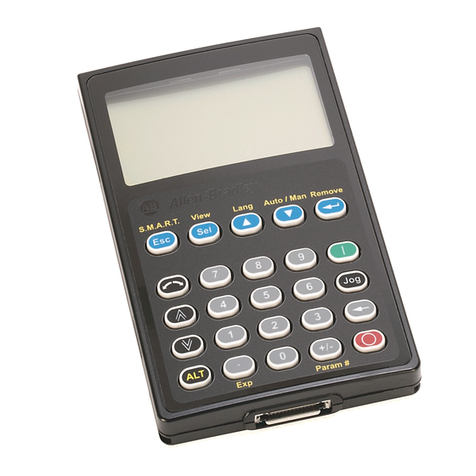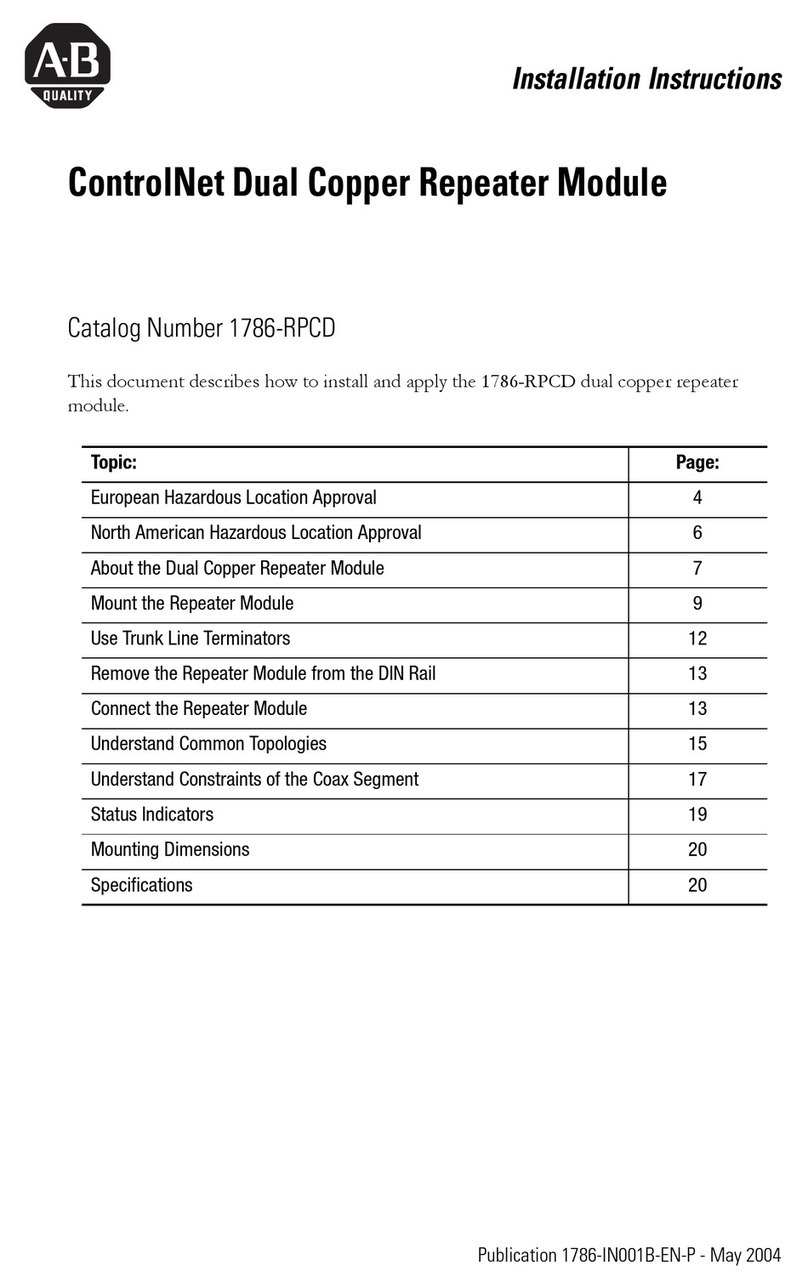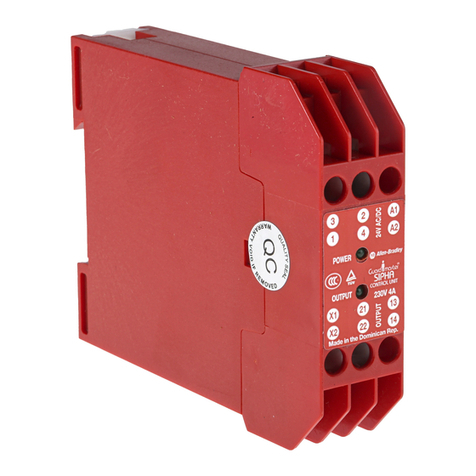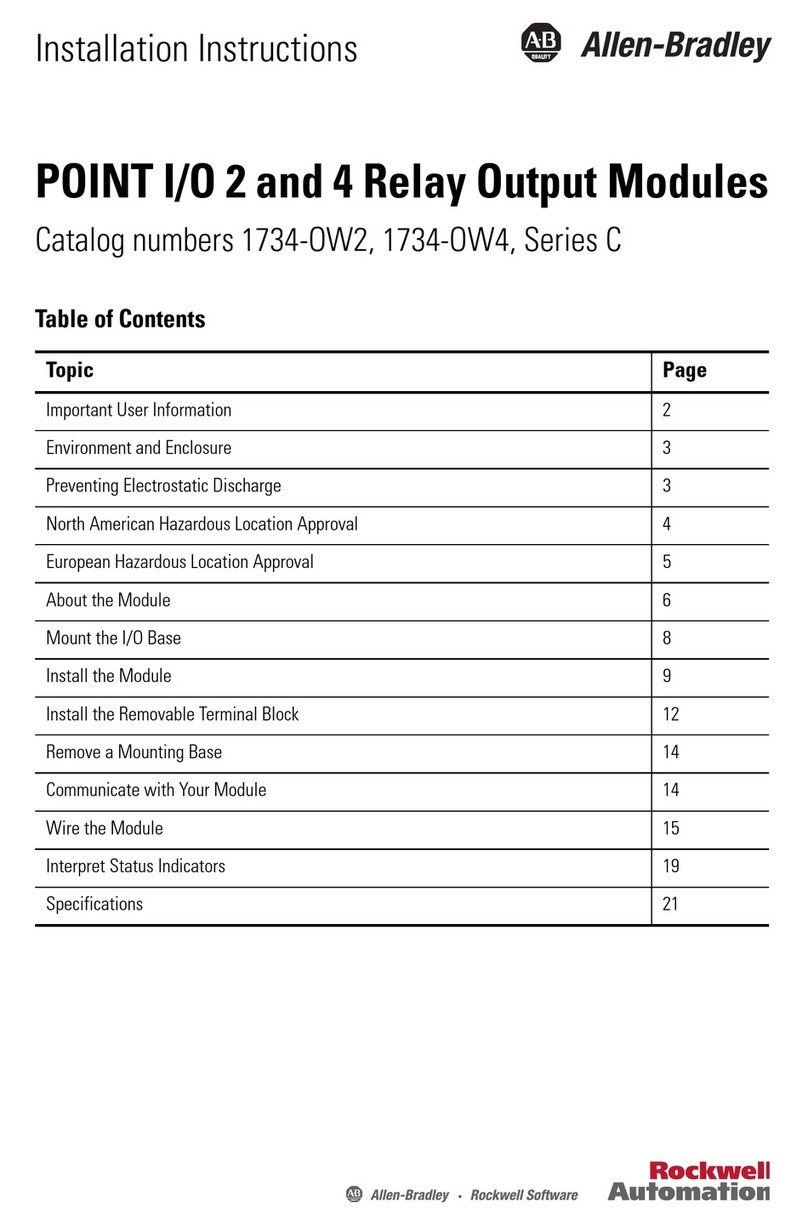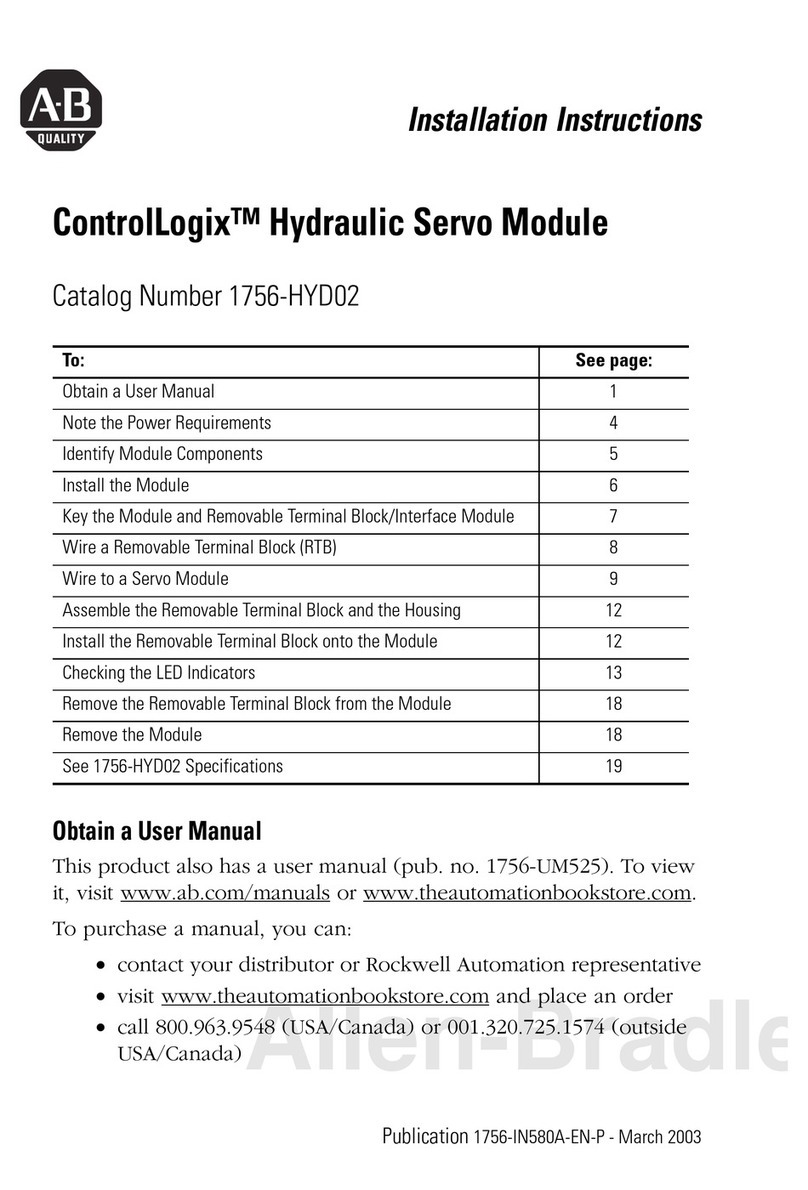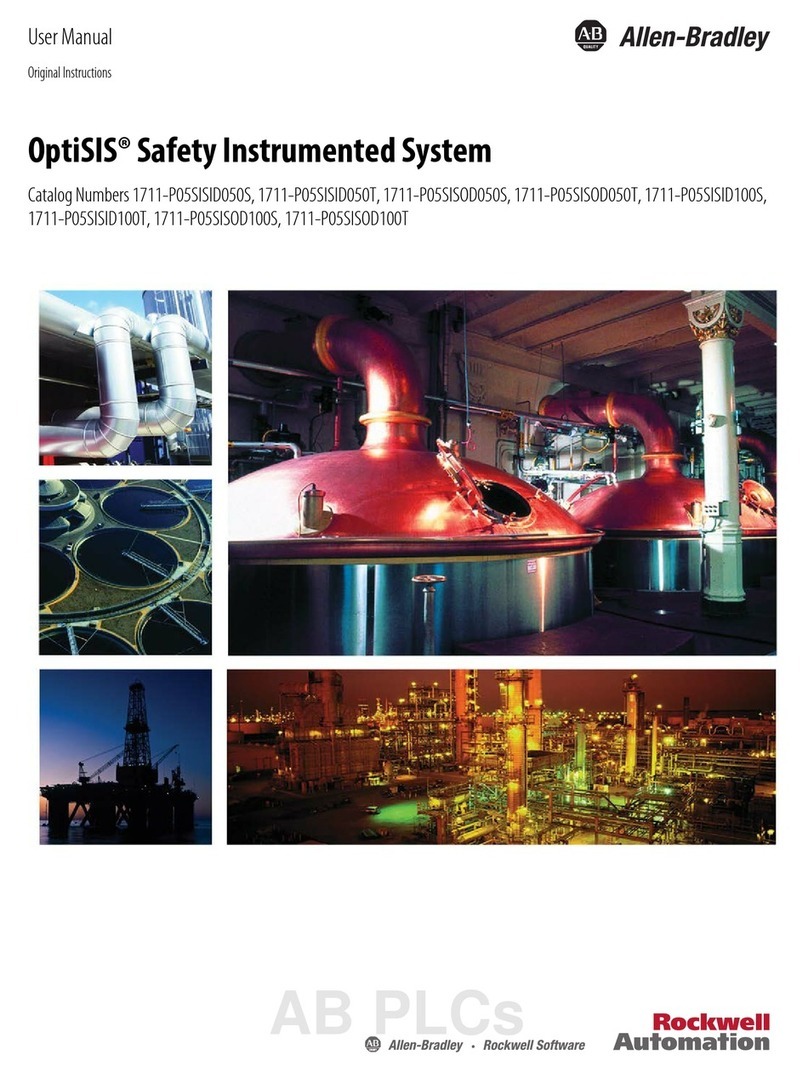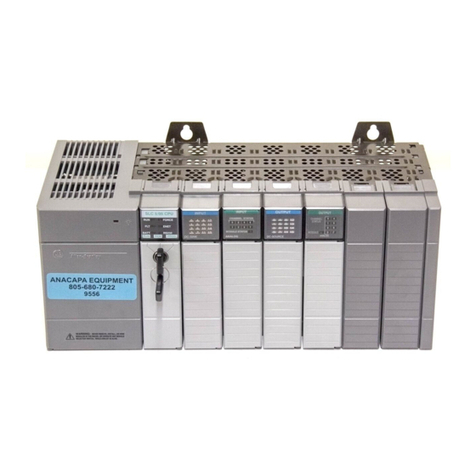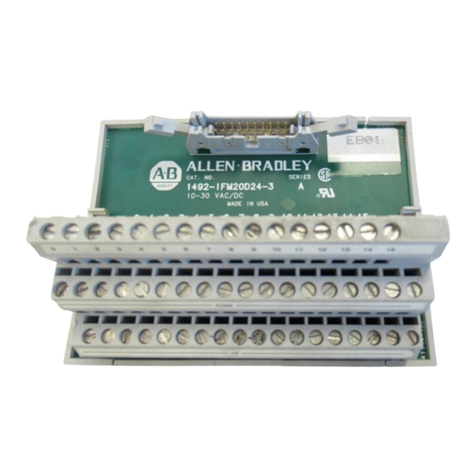
8Rockwell Automation Publication 750-UM004B-EN-P - October 2018
Preface
Terminology Table 1 defines the abbreviations that are used in this manual.
Table 1 - Abbreviations and Definitions
Abbreviation Full Term Definition
1oo2 One out of Two Refers to the behavioral designof a dual-channel safety system.
CAT Category Classification of the safety-related parts of a control system in respect of their resistance to faults and
their subsequent behavior in the fault condition, and which is achieved bythe structural arrangement
of the parts, fault detection, and/or by their reliability (source ISO 13849).
CL Claim Limit ThemaximumSILratingthatcanbeclaimedforasafety-relatedelectricalcontrolsystemsubsystemin
relation to architecturalconstraints and systematic safety integrity (source IEC 62061).
DeviceID Device ID A unique identifier, comprised of the module number and SNN, to make sure that duplicate module
numbers do not compromise communication betweenthe correct safety devices.
EN European Norm The official European Standard.
ESD Emergency Shutdown Systems A system, usually independent of the main control system, which is designed tosafely shut down an
operating system.
ESPE Electro-sensitive Protective Equipment
An assembly of devices and/or components working together for protective tripping or presence-
sensing purposes and includes as a minimum:
•Asensingdevice.
• Controlling/monitoring devices.
• Output signal-switching devices (OSSD).
HFT Hardware Fault Tolerance The HFT equals n, where n+1 faults could cause the loss of the safety function. An HFT of one means
that two faults are required before safety is lost.
HIM Human Interface Module A module that is used to configure a device.
IEC International Electrotechnical Commission The International Electrotechnical Commission (IEC) is the organization that prepares and publishes
international standards for all electrical, electronic, and related technologies.
IGBT Insulated Gate Bipolar Transistors Typical power switch that is used to control main current.
ISO International Organization for Standardization The International Organization for Standardization is an international standard-setting body that is
composed of representatives from various national standards organizations.
NC Normally Closed A set of contacts on a relay or switch that are closed when the relay is de-energized or the switch is de-
activated.
NO Normally Open A set of contacts on a relay or switch that are open when therelay is de-energized or the switch is de-
activated.
OSSD Output Signal Switching Device The component of the electro-sensitive protective equipment (ESPE) connected to the control system
of a machine. When the sensing device is actuatedduring normal operation, the device responds by
going to the OFF-state.
PELV Protective Extra Low Voltage An electrical system where the voltage cannot exceed ELV under normal conditions, and under single-
fault conditions, except earth faults in other circuits.
PFD Probability of a Dangerous Failure on Demand The averageprobability of a system to fail to perform its design function on demand.
PFH Average Frequency of a Dangerous Failure per hour The average frequency of a system to have a dangerous failure per hour.
PL Performance Level EN ISO 13849-1 safety rating
PM Permanent Magnet In permanent magnet (PM) motors, magnets mounted on or embeddedin the rotor, couple withthe
current-induced internal magnetic fields of the motor generated by electrical input to the stator.
SELV Safety Extra Low Voltage Circuit Asecondary circuitthatisdesignedandprotectedsothat,under normal and single fault conditions,its
voltages do not exceed a safe value.
SIL Safety Integrity Level A measure of a products ability to lower the risk that a dangerous failure could occur.
SSN Safety Network Number A unique number that identifies a section of a safety network.
STO Safe Torque Off The Safe Torque Off (STO) function is used to help prevent unexpected motor rotation during an
emergency while the drive remains connected to the power supply. When STO is activated, the torque
power cannot reach the drive, which stops and helps prevent any motor shaft rotation.
